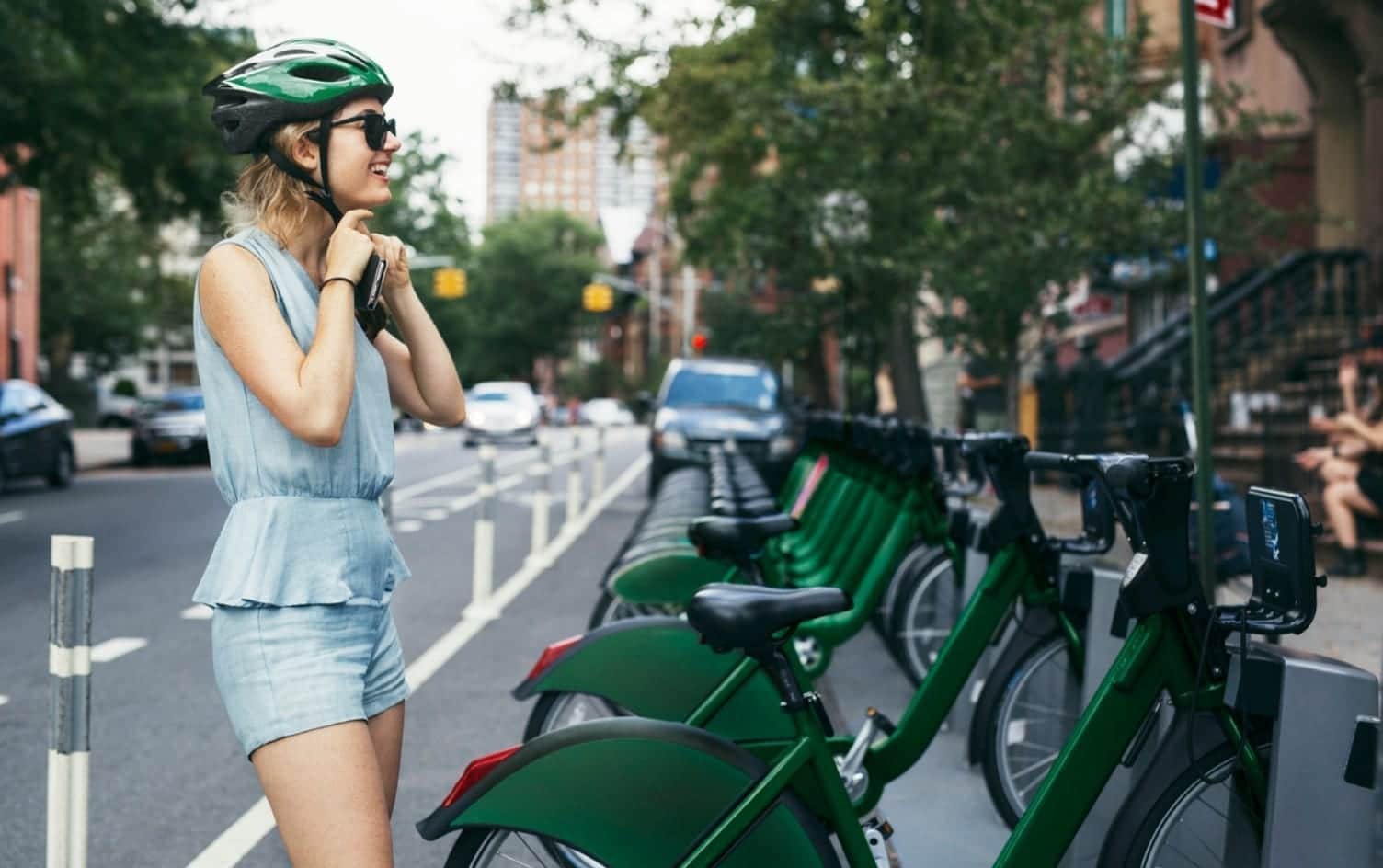In just about every major city, you’ll find bicycle-sharing systems — a service where bikes are available for shared use on a short-term basis for a set fee. The concept is simple: You borrow a bike from a “dock” (essentially, a special rack with computer controls that lock and unlock the bikes), ride one around town and then return the bike to that same dock (or another belonging to the same bike-share system) when you’re done.
Yet, even though I love biking — I’m a road cyclist and spin class devotee — I walk past these bike-share racks like Citi Bike in New York City, GoBike in San Francisco, Relay in Atlanta and B-Cycle in my own town of Boulder, Colorado, thinking it would be fun and convenient if I knew what I was doing.
This is why I called Kevin Crouse, the executive director of Boulder B-Cycle, and asked him for the info I need to start using bike-share systems when I’m here in Boulder or visiting other cities. (Considering bike-share systems available around the world more than tripled from 2013–2016, it’s clear bike sharing is here to stay.)
Here, Crouse and Sara Michaels, Boulder B-Cycle’s marketing, sponsorship and communications manager, share their best tips on how these bike-sharing systems work and what to know before trying one.

These are heavy, three-speed bikes, says Crouse, which means they’re not the most comfortable or efficient bikes if you’re planning on putting in lots of miles. Plus, most systems require you to dock the bike every 30–90 minutes if you don’t want to incur additional fees.
“Most station-based bike-sharing systems are designed to be an add-on to public transportation,” says Crouse. “You can take a bus in the morning when the weather is crummy and bike home later; or once you get downtown, you can bike from one place to another without having to leave your own, expensive bike locked up. Think of it like another public transit option.” If you’re wanting to cruise around town, a rental bike is a better bet.

Most bike-sharing systems have a website, which provides the info you need about where the docks are located around town, how much they cost and even step-by-step instructions on how to pay for, unlock and re-dock the bikes. Do this basic research before you use one of the bikes, and it’ll save you time and hassle, says Michaels. “Know where you’re going to pick up the bike and where you’ll leave it,” she says, “and whether you want to buy a pass or pay for a single ride. Most bike-sharing services also have an app — which you should download before you leave home — that makes things like finding a dock when you’re already on the road easy.”
Keep in mind different systems have different equipment, rules and fee structures, so doing a little bit of pre-ride planning can help you feel prepared.

While helmets aren’t required to use bike-sharing systems, they’re certainly a good idea considering bike helmets are 85–88% effective in mitigating head and brain injuries, according to the U.S. Department of Transportation Federal Highway Administration. You’ll also want to check the weather, says Crouse, and pack a windbreaker, gloves or any other gear you might need to stay comfortable when riding outside.

Flat tire? Gears not shifting easily? If anything goes wrong with your bike when you’re on the road, simply lock it to anything, call the bike-sharing company to let them know where it is and what’s wrong. They’ll tell you how to get back to wherever you need to go, says Crouse. “Then we’ll pick up the bike and make sure you’re not charged overtime fees,” he adds. If you find out the bike’s broken and you’re close to a dock, most of the docks have a button you can push to alert the company there’s something wrong.
However, keep in mind these bike-sharing companies regularly maintain the bikes, which means mechanical issues are rare. “I’d guess the number of times someone is stranded because of a problem with a bike is in the single digits out of the 108,000 trips we’re doing each year,” says Crouse.

In many cities, there’s a high demand for bikes and not enough bikes to go around, particularly at certain times of the day. The whole point of bike sharing is someone else can use your bike when you’re, say, at a work meeting or having that happy hour drink with a friend. When you’re done, another bike will hopefully be available for you. If you hog a bike by locking it to a nearby tree or sign post, you’re missing the whole point of bike sharing.





One Response
fuk outta here with this hipset bulshit. Buy a bike you cheap assh0le.